If your entire summer was spent working, don’t feel disheartened. We have an exciting activity to keep you engaged throughout the summer! Gather a series of summer mementos – and earn the chance to showcase your profile on Picaboo. Additionally, you’ll acquire the skills to bring the essence of summer into any season.
Hurry up and witness the majestic Parade of the Planets
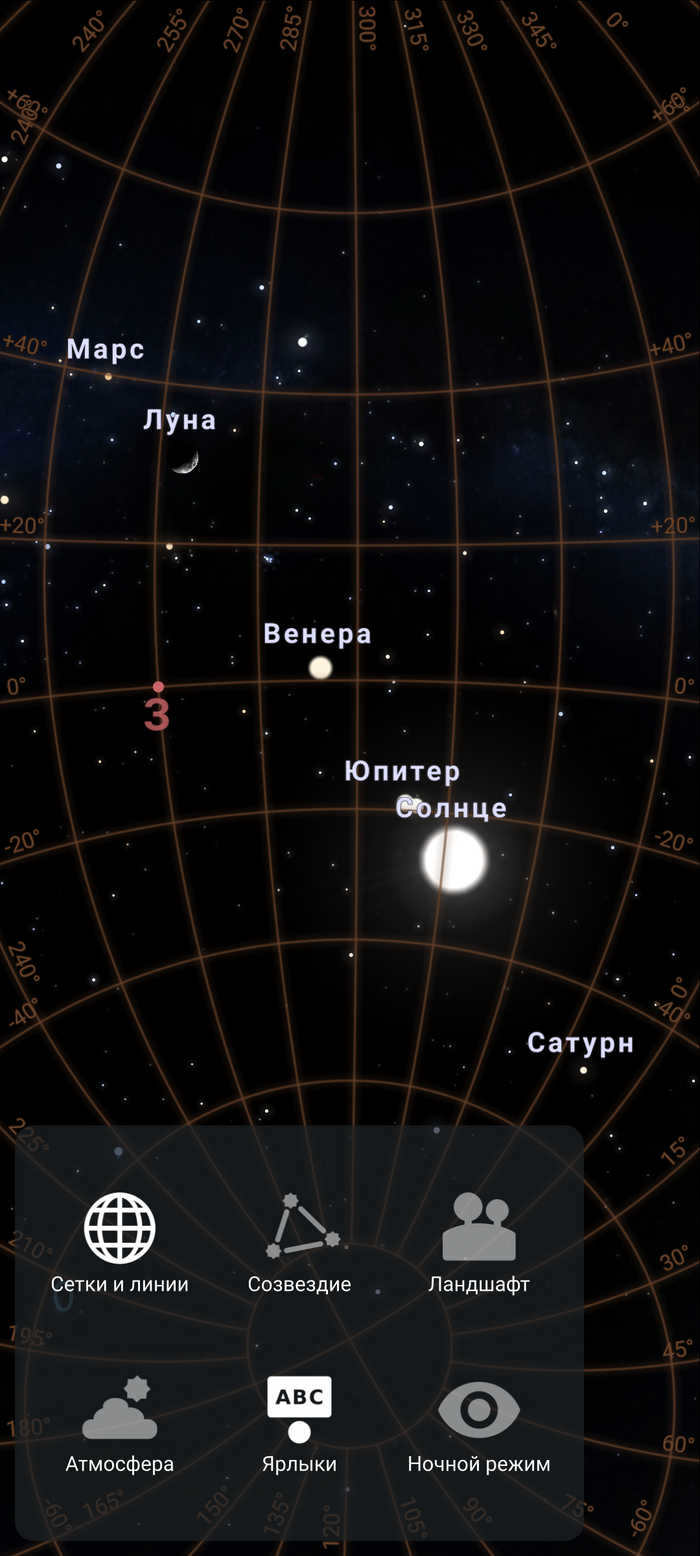
I utilize the appstellarium https://play.google.com/store/apps/details?id=com.noctuasoft. It effectively displays all celestial bodies in a 720-degree view. Thanks to this app, some may develop a theory about the plane of the Earth and why we see the same constellations in the sky.))))
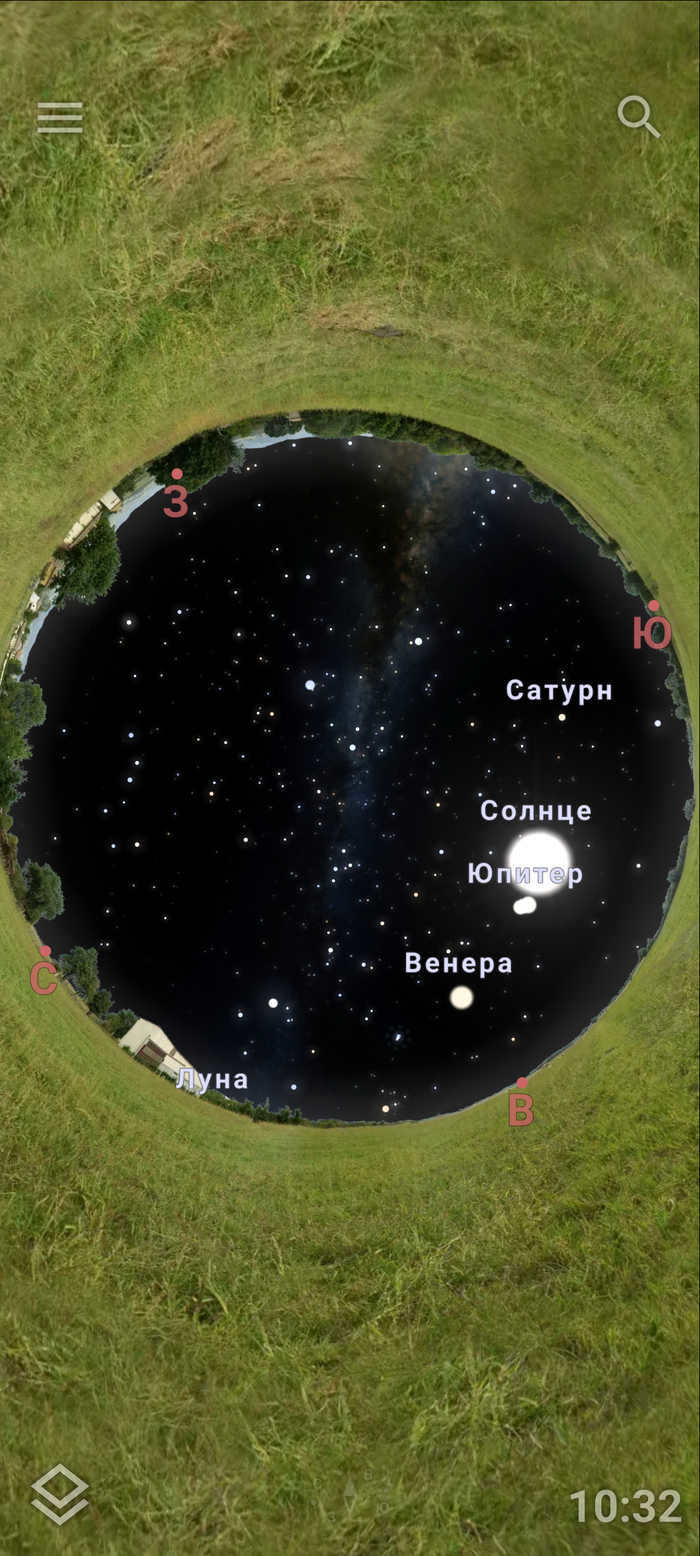
This presentation showcases the entire observable celestial realm.

Discover the wonders of the universe with Planet Parade!
Planet Parade 2022
Over the past weekend, people around the world were treated to an extraordinary sight: all the planets of our Solar System and the Moon aligning in a glorious formation in the Earth’s sky. This rare celestial phenomenon is not to be missed, as the next occurrence won’t happen until 2040.
On June 25, Egyptian astrophotographer Osama Fathi captured another stunning image of the uncommon celestial phenomenon near the oasis of El Fayyum. The photograph showcases the Moon and five visible planets against the stunning backdrop of sand dunes.
An American meteorologist also managed to obtain another highly impressive photograph of the procession of planets. The image was captured on the morning of June 24 in the vicinity of St. Cloud, Florida.
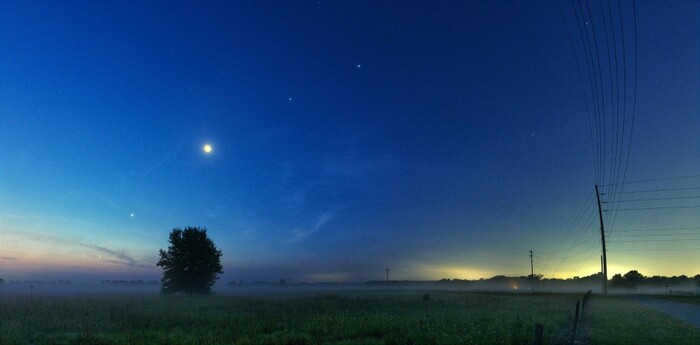
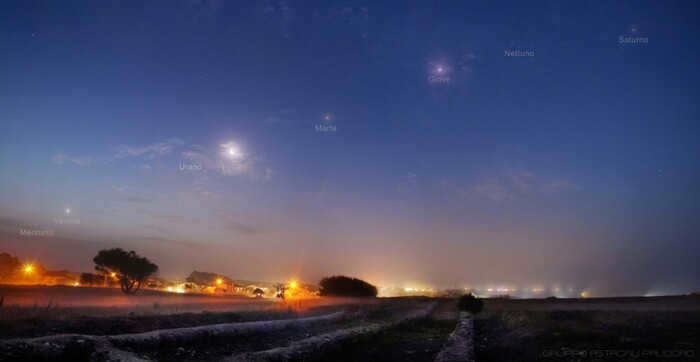
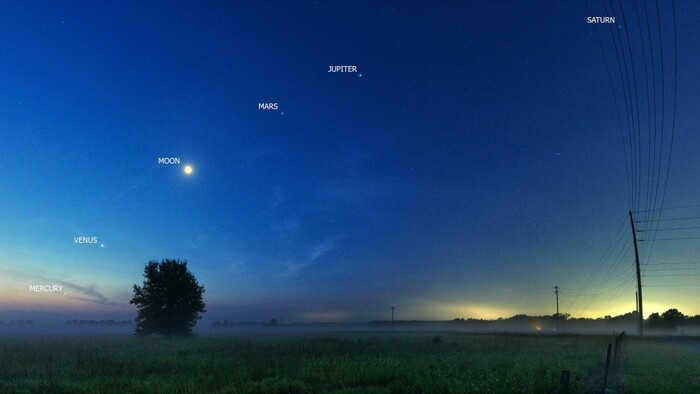

Venus. Morning visibility 2022. Video review
A few days ago, an article was published discussing the upcoming visibility of Venus, also known as the “morning star”, which is the most stunning and brightest celestial body in the sky after the Sun and the Moon.
If you happened to miss the article or simply didn’t feel like reading it, fear not!
We now have a video version of the article available, complete with captivating images, animations, and an excellent narrator.
This informative and entertaining video has been uploaded to Youtube. So go ahead, click the link, and enjoy!
Wishing you all pleasant weather and successful observations!
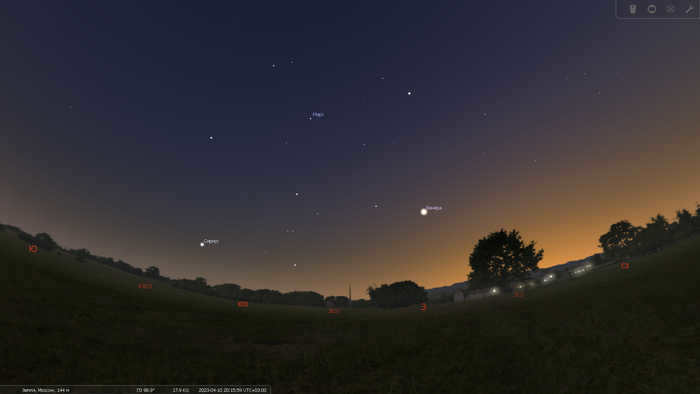
December 2021: Witness the Spectacular Planet Parade
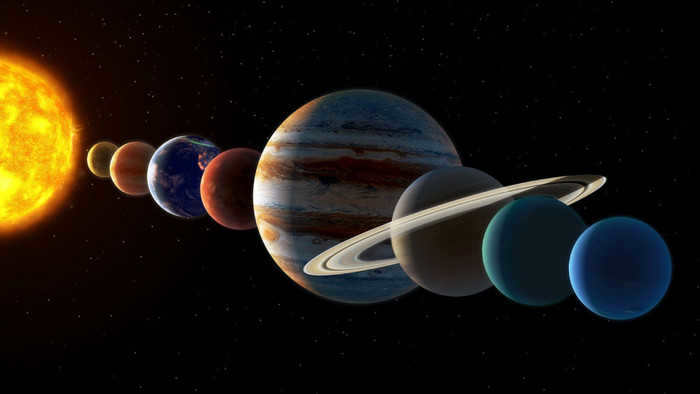
Many have probably heard about the ongoing phenomenon known as the Parade of Planets. Some refer to this parade as “small” and suggest that there are more impressive ones. However, not many people truly understand the essence of this phenomenon.
So, what exactly is a “planetary parade”?

The Sun’s position at the top of a relatively small region made it possible for the American robotic station Voyager-2 to explore all four gas giants in the Solar System, which was an incredibly significant undertaking.

Despite the skepticism of astronomers at the time, they had to acknowledge that the arrangement of the planets during the “parade of planets” was truly extraordinary. Such an alignment does not occur every year, and not even every century. This phenomenon provided significant scientific value.
When the term “Parade of Planets” is mentioned, most people envision all the planets of the solar system aligning in a single line. People, in general, have an appreciation for beauty. However, there are some who prefer excitement, so even back then, rumors circulated that the combined gravitational force of the planets would cause them to spill out of the Sun and engulf the Earth in scorching plasma, ultimately annihilating all life forms and bringing an end to the confrontation between the socialist and capitalist world systems.
In reality, the planets did not align in a straight line. The narrowest sector in which all the planets (including Pluto, which was still considered a planet at that time) could fit was slightly wider than 90 degrees. So, from the perspective of the average person, it appeared as a parade.

From the perspective of observing the planets, there was nothing particularly notable occurring in the celestial sphere. There was no visible alignment of the planets in a chain formation. On the contrary, those planets that were closer to the Sun appeared dimmer in its radiant glow, while those planets positioned farther from the Sun than Earth were scattered across different constellations, quite distanced from one another. Only Jupiter and Saturn were in close proximity to each other at that time, and the sight was breathtaking. I was in the 4th grade when I witnessed them in the night sky, and it was immediately apparent to me that they were not ordinary stars.

The majority of people didn’t notice the parade of planets in the 80th year – they heard about it, but hardly anyone actually saw it. However, this opportunity to study all four giant planets of the Solar System – Jupiter, Saturn, Uranus, and Neptune – greatly enriched science. This expedition continued until the late 80s, and the data collected by the Voyager spacecrafts is still being analyzed today.
Since that point in time, the planets have not been positioned within such a narrow sector. However, the human imagination knows no bounds. In order to further exploit the term “Parade of Planets” and generate waves of excitement in the media, an individual from the journalistic community has devised a fresh concept. Now, it is no longer necessary to assemble all of the planets, and it doesn’t matter how they are arranged in their respective orbits – we are observing from Earth! It is sufficient if three planets are visible in close proximity to each other – within one or two constellations. This will be referred to as a “Small Parade of Planets”. Moreover, if additional planets congregate in the sky alongside one another – four or five – it will be deemed a “Big Parade of Planets”.
It was not specified what type of planets we are referring to – whether it is the visible ones or all the larger ones, including Uranus and Neptune, which are significant planets in the Solar System but not visible to the naked eye. Perhaps we should include smaller planets in the potential participants of the parade. – Oh! There are too many of them! So, we don’t need all of them – only the most famous and largest ones – Ceres, Vesta, Juno, Pallada… Well, and Pluto, of course – for old memories….
In other words, the new interpretation of the term allows for a great deal of flexibility in announcing a parade of planets on any given day. So, it is not uncommon to see headlines in newspapers about upcoming or already occurred parades, often without any clear reason, and astronomers have no idea what it is all about.

However, more frequently than not, the event was still discovered. And it was the journalists, not the astronomers, who informed the public that it was an opportune moment to observe multiple planets simultaneously. There was an advantage to that.
There was a disadvantage. Under such circumstances, often some tall tales, false prophecies, which never came to fruition, were slipped in, but it only heightened anxiety in society, causing people to rush to the stores and spend their last pennies.
Regarding any stimulus, including information outbreaks, they are also a form of contagion, the vulnerability to anxiety-inducing moods stemming from all these “parades” diminished over time. It is impossible to worry indefinitely about nothing. However, the fascination persisted. And now, when the media announces another “planetary parade,” individuals no longer inquire about what to purchase and where to seek refuge, but rather are inquisitive about where to direct their attention and what they might observe.
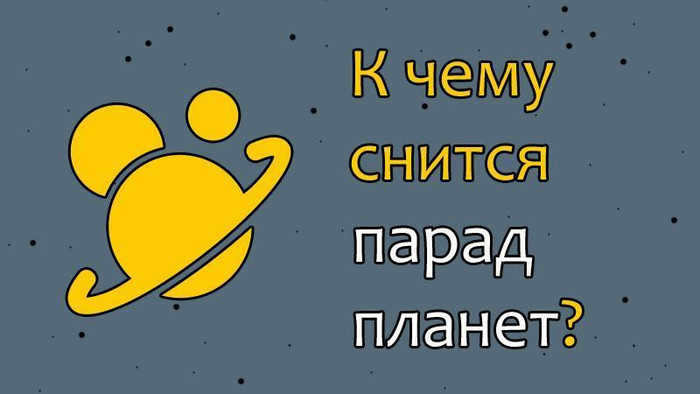
Throughout the majority of the previous year (starting from April), the night sky was adorned with the presence of the two largest celestial bodies in our solar system – Jupiter and Saturn. These two giants were not too far apart from each other, residing in the same constellation known as Capricorn (although Jupiter occasionally ventured into Aquarius, tracing a loop). However, something seemed to be missing – a third entity to complete the grand spectacle.
By the end of November, the luminous Venus joined forces with Jupiter and Saturn. While its evening visibility had begun as early as June, it had yet to reach its full potential – the planet remained concealed in the evening dawn, lingering low on the horizon, patiently awaiting the arrival of late autumn. Finally, the stars aligned – the fleet-footed Venus gradually slowed down after reaching its maximum distance from the Sun, positioning itself at a distance from Saturn that mirrors the gap between Jupiter and Saturn in the night sky. The result was nothing short of breathtaking, a perfect symphony of celestial harmony.

This arrangement will remain nearly unchanged until the end of December. The entire trio will be approaching the Sun, maintaining their relative positions. With its synchronicity and constancy, the December alignment of Venus, Saturn, and Jupiter truly deserves to be called the “Parade of Planets”.
Whether it’s “Small” or “Big” will become clear now.
After all, there are no restrictions on joining the parade only for the planets visible to the naked eye.
What else can we find in the sky?
It turns out that at approximately the same distance that separates Venus and Saturn, Saturn and Jupiter, but slightly to the east of Jupiter, you can spot Neptune with a small telescope.
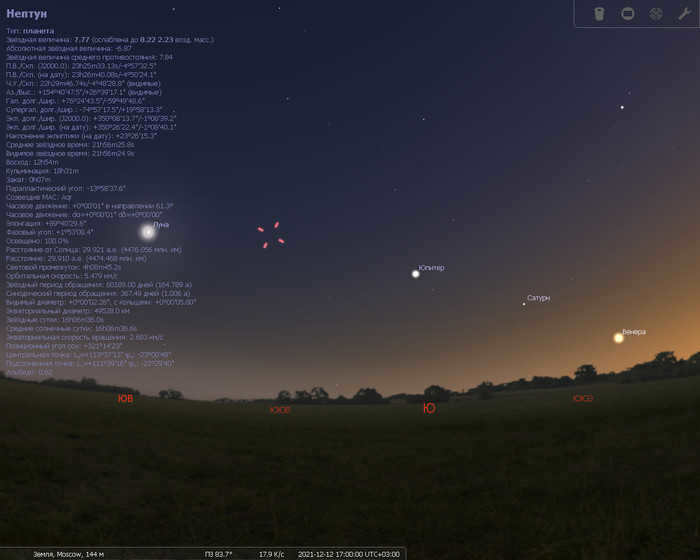
If you observe the constellation Aquarius, you will notice that Neptune occupies a prominent position in its vicinity. Specifically, it is situated near the star formation known as the “Chicken Paw,” which is comprised of the stars φ χ ψ Aquarius. By locating this distinct asterism, you will have no trouble spotting Neptune.

However, this is not the conclusion of the matter. If you journey towards the east along the ecliptic to the constellation of Aries, you will come across the planet Uranus in its southern region, on the edge of the Pisces constellation. Technically speaking, Uranus is visible to the naked eye. Of course, not in urban areas. But there was no guarantee that all these “parades of planets” would only be of interest to urban dwellers.

In the evening, we can observe five prominent planets of the Solar System, which are easily visible and can be observed using amateur equipment such as small telescopes, binoculars, and tubes. Moreover, even with an ordinary camera like the Samsung M-31, it is now possible to capture images of Uranus and Neptune. The challenge, however, lies in accurately identifying which points in the image represent Uranus and Neptune.
However, as you gain more experience, this task will become less challenging. You can even make a comparison between images captured on different evenings and observe the gradual movement of these remote planets in relation to the backdrop of even more distant stars. This is precisely how astronomers in the past made their discoveries of new planets and asteroids – by detecting the shifting of a planet.
Now that we have brought up the topic of asteroids, it wouldn’t hurt to ponder whether any of them are also visible in the night sky of December 2021?
First and foremost, we have Ceres – not precisely an asteroid, but rather a dwarf planet. Ever since its discovery in 1801, this relatively small celestial object has been regarded as a fully-fledged planet for a significant period. However, as more similar objects were found – drifting and lacking brightness, appearing indistinguishable from stars – they were all collectively reclassified as asteroids (or minor planets). Nevertheless, Ceres received an upgraded status in 2006, alongside Pluto, and was classified as a dwarf planet.

Located in the night sky of December, Ceres can be found to the east of Uranus, in the constellation of Taurus. It is positioned between the star clusters of the Hyades and Pleiades, making it a convenient location for observation. Interestingly, Ceres is almost as bright as Neptune, and perhaps even slightly brighter.
In this group of celestial objects, there is another minor planet called Pallada, also known as asteroid number two. It might seem logical to assume that Pallada should be classified as the first dwarf planet, but it is still officially considered asteroid #2.

In close proximity to Neptune, on the opposite side of the constellation Pisces, you can find Pallada. To observe it clearly, a more powerful telescope is required due to its 10th magnitude.
The December “Parade of Planets” showcases Uranus and Neptune, the two distant gas giants, along with the smaller planets Ceres and Pallada, presenting an intriguing celestial display:
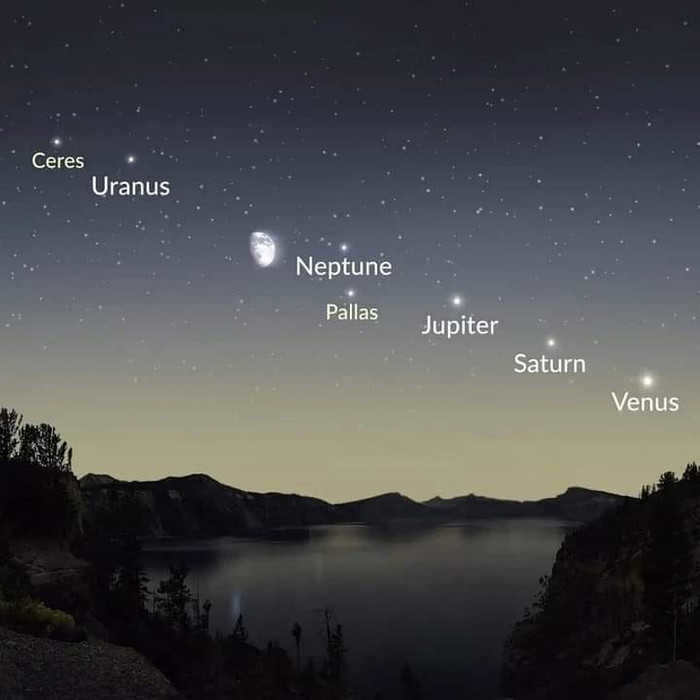
The event could be aptly named the “Grand Parade”, as the terminology is not strictly scientific and allows for some creativity – if we so desire, we can even refer to it as the “Grand Parade of Planets” – nobody would be any worse off. However, for those who may question this approach, asking, “Is this the proper way to describe it?”, I would like to mention that right alongside Venus in the frigid December skies, we can find the even colder Pluto, the ruler of the dwarf planets. Although it is not visible with amateur telescopes due to its very faint brightness – 15th magnitude – it would be remiss not to acknowledge its presence.
Incidentally, on December 11, Venus and Pluto were in a near alignment. To clarify, Venus passed by the minuscule Pluto at a minute angular separation – a remarkably close encounter… although, of course, this is merely a perceived alignment from our vantage point on Earth. In actuality – in the vast expanse of outer space – Venus and Pluto are separated by a staggering 6 billion kilometers, and this apparent proximity will have no impact on the planets whatsoever – no extraordinary events will transpire as a result.
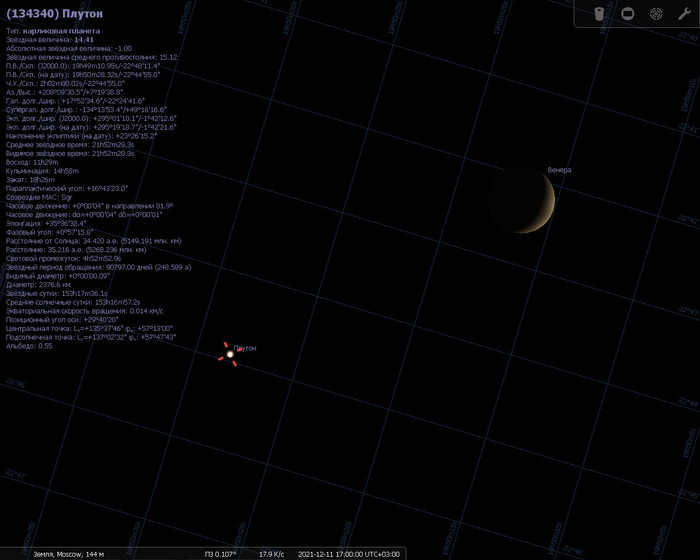
Who else haven’t we discussed?
We haven’t mentioned Mercury and Mars yet. Unfortunately, they are not visible in the evening, so they cannot participate in this “Parade of Planets”.
Starting from mid-December, Mars can be seen in the morning dawn for experienced observers. I have already had a glimpse of it. However, Mars doesn’t offer anything extraordinary at the moment. Better visibility conditions will occur after New Year’s Day, as Mars slowly transitions into the pre-morning and night sky.
Mercury is not observable in December, however, it will become visible in the early morning sky towards the end of January, when Venus will also join in after the Christmas break. Unfortunately, Venus will disrupt the evening procession of planets. However, on the bright side, three planets – Mercury, Venus, and Mars – will be simultaneously visible in the morning sky.
The evening parade of planets is no more. Hail the morning parade of planets!


The anticipation of astronomy and space enthusiasts has finally been rewarded as the long-awaited moment has arrived. The grand planetary parade unfolded in the heavens above Khabarovsk. Originally scheduled for June 24, 2022, the planetary parade was unfortunately hindered by cloudy weather, forcing the eager audience to delay their cosmic spectacle until the skies cleared. However, on the first day of July, the clouds dissipated. Astronomers assembled their telescopes, loaded their cameras, and extended an invitation to all those who wished to witness this extraordinary celestial event firsthand.
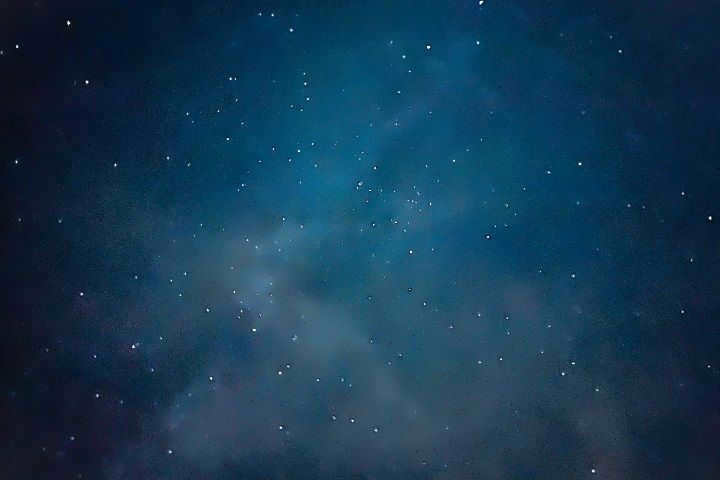

HOW DID YOU SPEND YOUR FRIDAY EVENING?
On the evening of Friday, a group of 15 individuals assembled near the village of Druzhba to witness the spectacle of all seven planets of our solar system (with Earth being the eighth) making an appearance in the magnificent night sky. This planetary parade is a unique occurrence, providing the rare opportunity to observe all the planets in a single night. However, it should be noted that the term “parade” may not be entirely accurate, despite its intriguing connotation.
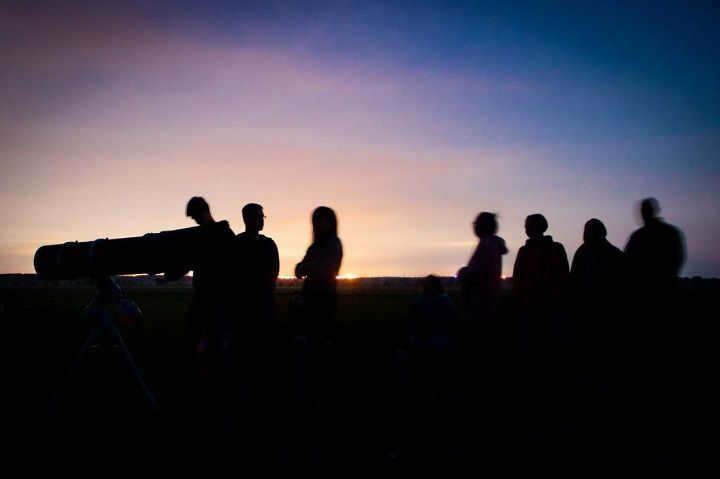
– A parade of planets occurs when multiple planets align on one side of the Sun, making them visible in a specific area of the sky. During this phenomenon, the planets appear to form a line. The alignment can involve as few as three planets or all seven planets. However, it is impossible to see them perfectly aligned in a straight line due to the geometry of their orbits, – explained astronomer Evgeny Revva.
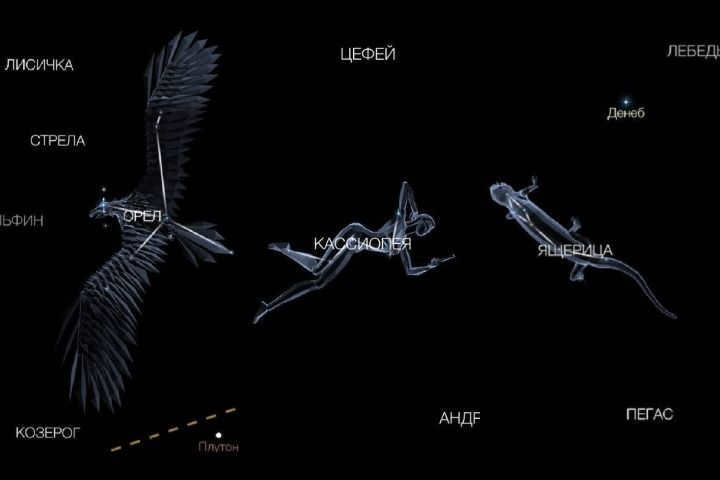
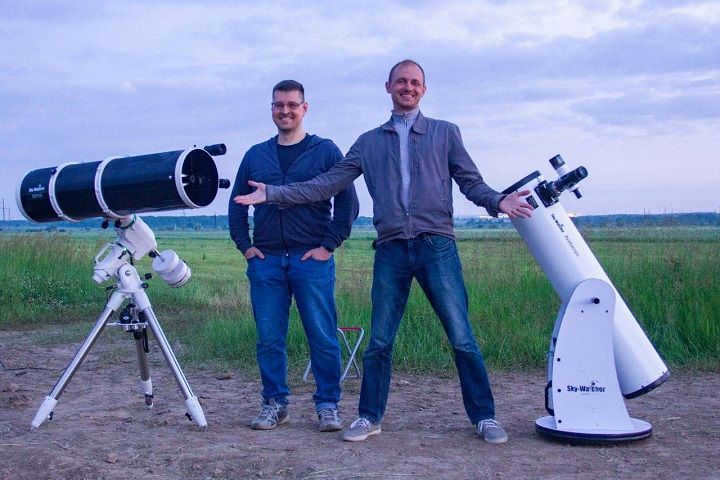
DRAGONFLY, TEAPOT AND BAGEL
The night started with a set of strict rules that included no phone usage, no flashlights, and even the car headlights had to be turned off. This was all because even the tiniest bit of light can disrupt our eyes, which were adjusted to complete darkness. Therefore, the viewing took place in the dark, with no light except for the special lanterns and magical laser pointers. With these lasers, astronomers were able to clearly point out which star we were observing.
Eugene explains how to locate Polaris using a laser pointer
Marina GONCHARENKO
– Vladimir is equipped with a Newton telescope mounted on a Dobson mount. This particular telescope is a reflector telescope that was originally designed by Isaac Newton. It utilizes two mirrors: a flat mirror and a concave mirror, which reflect the sky. As a result, the image produced by this telescope is inverted. The main difference between Newton’s original design and the modern version is the materials used for the mirrors. Newton used polished metal plates instead of glass mirrors with coatings, but these plates would lose their shine quickly. Additionally, the diameter of the original telescope was much smaller compared to the current ones, – explained Evgeny Revva.
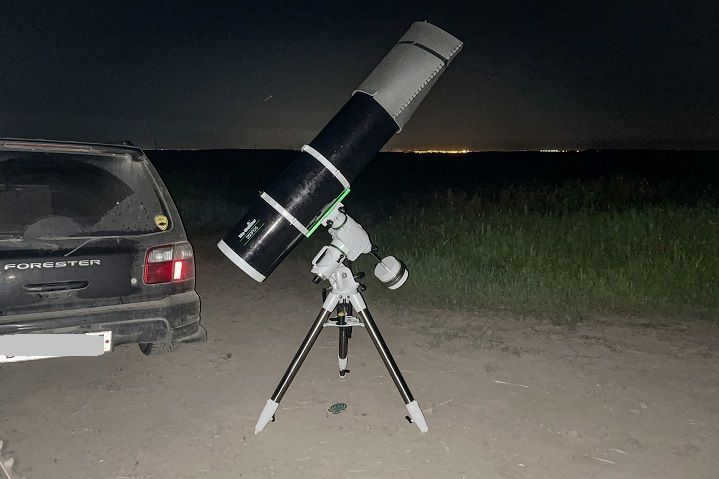

The event commenced with a presentation by Vladimir Naumov about the vastness of outer space. The astrophysicist assembled his towering telescope and allowed everyone to peer through it, gazing at the twinkling stars, stellar clusters, and ethereal nebulae. The audience was also challenged to exercise their intellect by solving astronomical puzzles, such as determining the true hues of the stars and identifying their relative ages. This required the application of logical reasoning and the utilization of previously acquired knowledge.

The night’s program featured various celestial sights, including the Mitsar and Merak stars in the Big Bear constellation, the Dragonfly cluster in Cassiopeia, the Sagittarius constellation playfully referred to as the “brew pot” due to its cloud-obscured portion resembling a teapot from a distance, as well as the Ring Nebula in Lyra and the M13 globular star cluster in Hercules. These were just a few highlights from the array of fascinating phenomena that captivated the audience through the telescopes.
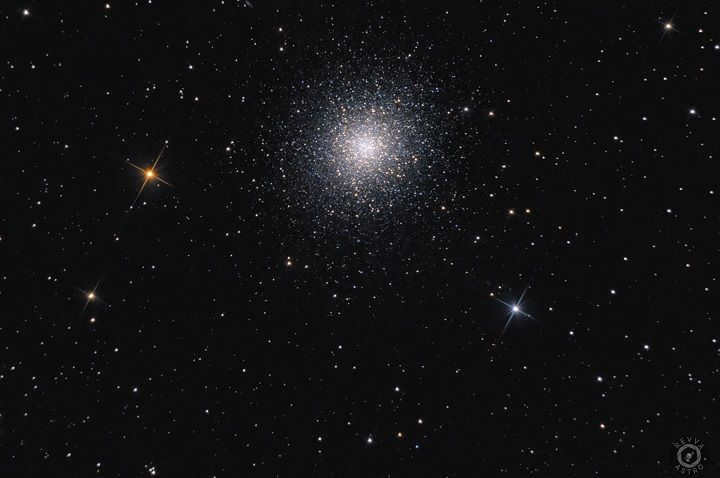
An incredible spectacle occurred when a firefly chose to perch on Eugene’s telescope, creating quite a sensation. Numerous individuals had the opportunity to witness this extraordinary insect up close and personal for the very first time. Evidently, sensing the air of intrigue, the firefly also decided to stage its own performance, demonstrating that captivating wonders can be discovered right here on Earth.
Firefly making its way across the telescope
Evgeny REVVA
HIGHLIGHT
During the early hours of the morning, the telescopes focused their lenses on the initial planet of the grand procession. That planet happened to be Saturn. A truly mesmerizing sight unfolded before the onlookers: the rings, composed of frozen fragments, became visible, and even the planet’s distinctive color was discernible. It is a rare opportunity for individuals to observe such a seemingly minuscule dot in the celestial sphere with such remarkable clarity.
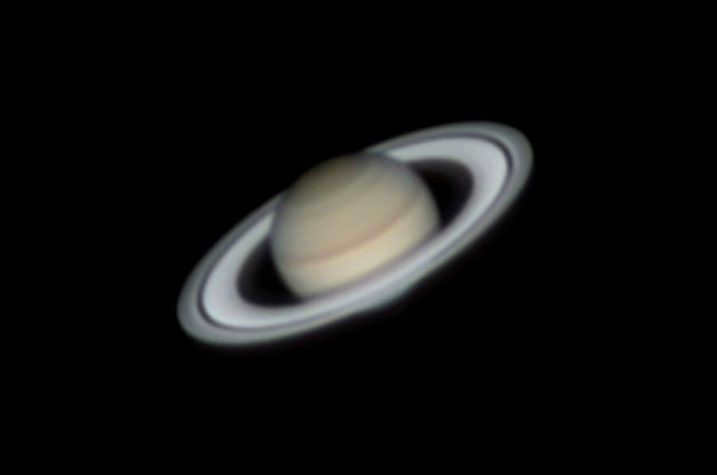
Afterwards, those in attendance marveled at Jupiter. The distinct bands on the enormous planet were even discernible. The solar system’s largest planet proved to be stunning and captivating.
– Jupiter boasts over 80 satellites. Today, we caught sight of four of them,” shared Vladimir Naumov.
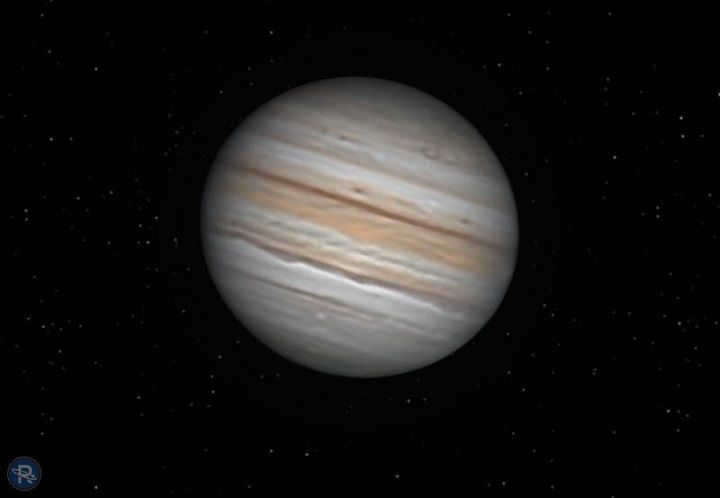
Neptune was quickly spotted in the lenses. The astronomers confessed that they seldom observe this planet themselves, so they examined it at various levels of magnification. Due to its great distance from Earth, Neptune appears as nothing more than a shimmering blue speck even when viewed through a telescope. However, the mere opportunity to include this gas giant in tonight’s checklist is already significant.

Later on, the planet Mars becomes visible in the sky close to the town of Friendship. It is a truly awe-inspiring sight, especially considering that it is not too distant from our own planet Earth. This crimson celestial body, which has been the subject of countless legends and myths, proves to be a truly magnificent and captivating sight. However, despite our best efforts, no signs of extraterrestrial life, Mars rovers, or even a greenhouse reminiscent of Matt Damon’s character in “The Martian” could be discerned.

While everyone eagerly awaited the appearance of Venus and Uranus, a fascinating sight unexpectedly graced the sky: the ISS (International Space Station). Vladimir diligently adjusted the telescope to catch a glimpse of it. He had to remain focused and unwavering, tracking the elusive glimmering dot. Additionally, the spectators were treated to the spectacle of a UFO. Yes, you read that correctly. A mysterious object zipped across the heavens, possibly a satellite or an aircraft. Due to the inability to definitively identify it, the object remained an unidentified flying object for those present.

THE SUPPLY OF COFFEE WAS DEPLETING, AND THE SUN WAS RISING
While awaiting the arrival of the final planet, astronomers delighted the crowd with another captivating performance. Eugene brought out a glucophone, allowing everyone to experience the enchanting melodies of “space” music. Vladimir also attempted to play this extraordinary instrument.
Vladimir is a skilled player of the glucophone
Yevgeny REVVA
As the morning sun began to rise, around four o’clock, the audience had the opportunity to witness the mesmerizing sight of Mercury. Up until that point, only the most dedicated spectators remained. Only a handful of guests stayed until the very end of the grand planetary showcase. The people of Khabarovsk came together to greet the dawn and exchanged their thoughts and feelings about the experience.

– It was an amazing experience! Memories that will last for a lifetime, – exclaimed Tatiana, one of the attendees.

The last night of the magnificent planet parade was characterized by the presence of distant stars, located hundreds of light years away from our planet. These stars, once only known to us through textbooks, added a celestial beauty to the atmosphere. The event provided a wonderful opportunity for stargazers to witness this remarkable phenomenon alongside pleasant company. Fortunately, the planet parade will continue for another week, until approximately July 9, providing ample time for everyone to take advantage of this unique spectacle.


In 2040, the planets will once again align for a spectacular display. Those fortunate enough to have witnessed the celestial event are eagerly sharing their experiences of spending the night in the field, and eagerly anticipating the next observation in Khabarovsk, which will be arranged by Eugene and Vladimir.


Discovering the Great Parade of Planets in Khabarovsk: when and where to witness it
The citizens of Khabarovsk will have the opportunity to witness the impressive Great Parade of Planets during the night of June 25 (more)
Circle of sunlight: Khabarovsk Krai residents experienced a remarkable atmospheric phenomenon
The atmospheric halo above Khabarovsk was visible to the city’s residents on May 27 (more)
Moon shining brighter than a spotlight: Khabarovsk residents encountered an astonishing cosmic phenomenon
Hundreds of people in Khabarovsk were able to observe the super moon (more)
EXPLORING THE COSMOS FURTHER:
UFO traces, Terminator, and Epidemic Swamp: a Khabarovsk astronomer reveals the secrets of the Moon
An astronomer from Khabarovsk shared his experience of observing the night sky through a telescope in the city center. He explained how one can see the Moon without any cost. The amateur astronomer mentioned that Khabarovsk is a great place for stargazing due to its boundless space. In an interview with “KP” – Khabarovsk, he talked about his passion for astronomy and the joy it brings.
Further reading
Age group of the website 18 and above
The online publication (website) has been officially registered with Roskomnadzor, certificate number FS77-80505 dated March 15, 2021.
Chief Editor – Olesya Nosova.
Website Editor-in-Chief – Viktor Kanskiy.
The author of the current version of the article is Vladimir Nikolaevich Sungorkin.
Messages and comments from readers of the website are published without prior editing. The editorial team reserves the right to remove or modify them if they constitute an abuse of freedom of mass information or a violation of other legal requirements.
The materials posted on the website www.kp.ru are protected by exclusive rights, as stated by the legislation of the Russian Federation on the protection of intellectual property. These rights belong to JSC “Publishing House “Komsomolskaya Pravda” and cannot be used by any other individuals without the written permission of the copyright holder.
If you wish to acquire copyright or get in touch with the editorial board, please contact [email protected].
Stargazing enthusiasts are in for a treat with an upcoming astronomical event. Just after sunset, it will be possible to witness the alignment of the five planets in the Solar System. These planets will be perfectly lined up in the sky. “Hitech” provides valuable information on how to prepare for this event and the best locations for observing the planet alignment.
Discover the word “Hitech” in
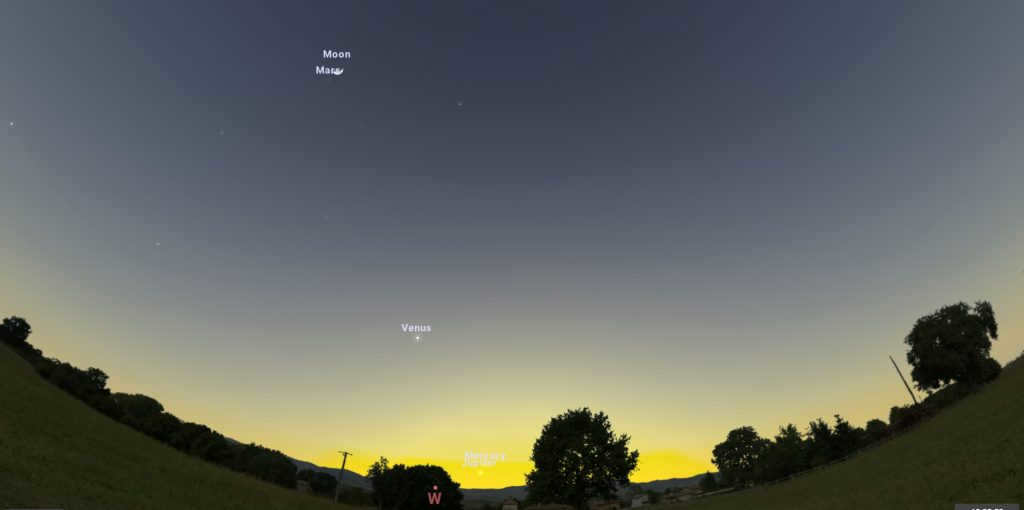
Anticipated by astronomy enthusiasts, a unique celestial phenomenon is set to take place in late March of 2023. A dazzling parade of planets, including Jupiter, Mercury, Venus, Uranus, and Mars, will grace the night sky with their presence. On the evening of March 28, if weather conditions permit, spectators will have the opportunity to witness these celestial bodies align in a mesmerizing display within a specific sector of the sky. While the peak of this event is expected on that night, the gradual alignment of the planets can be observed a few days before and after. However, it should be noted that after March 28, Jupiter may become obscured by the radiant glow of the setting sun, making it preferable to choose one of the preceding days for optimal viewing.
What is a planetary parade?
- A mini planetary alignment (3 planets);
- A minor planetary parade (4 planets);
- A big parade of planets (5 or 6 planets);
- A complete alignment of planets (all planets of the Solar System).
An entire planetary alignment is an exceptionally uncommon event. The most recent time it happened was in 1982, and the following one won’t happen until 2161.
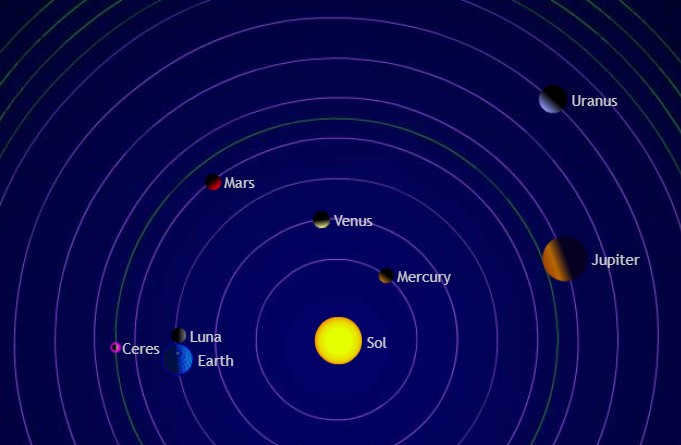
How to get ready and where to spot the phenomenon?
Some of the celestial bodies are bright enough to be visible to the naked eye, even in areas with moderate city lights. For instance, Venus is one of the most luminous objects in the sky, second only to the Sun and Moon. However, the visibility of other planets may pose more of a challenge.
As a result, astronomers recommend heading out of town for optimal viewing conditions, away from the bright lights that can hinder the appreciation of the nighttime wonders. Another crucial requirement is an unobstructed view of the western horizon for observation purposes.
Mars and Venus will reach a sufficient height above the horizon, while Jupiter and Mercury will only become visible shortly after sunset near the ground. This means that the presence of mountains, buildings, or forests may obstruct observations. The ideal situation would be if the coastline faces West, as in that case, nothing (except for the weather) would interfere with the observations.
Mars and Venus will be easily visible to the naked eye, but to get a more detailed view of the shimmering Mercury and faint Jupiter, it is recommended to use binoculars or a telescope. Additionally, Uranus is always beyond the range of naked-eye visibility, so optical magnification is necessary to observe all five planets.
It is important to prioritize safety: since Mercury and Jupiter are very close to the edge of sunset, caution should be exercised when using optical instruments after the Sun has disappeared behind the horizon.
Right after the Sun goes down below the horizon, direct your gaze towards the west. Near the horizon, where the Sun has recently disappeared, you will be able to observe the presence of two planets, Jupiter and Mercury. These two celestial bodies will emit a significant amount of light, with Mercury shining at a brightness level of -1.4, which is just a tad less radiant than Sirius, the most brilliant star in the entire sky. Jupiter, on the other hand, will be even more striking, boasting a stellar magnitude of -2.1, which signifies that it is twice as luminous as Mercury.
Despite the luminosity, spotting the planets may prove challenging due to residual solar illumination, but binoculars can provide assistance. Mercury will be situated slightly to the right and above Jupiter, with both planets separated by a visual distance slightly greater than the width of one finger when your hand is stretched out. Both planets will vanish below the horizon less than one hour after the sun sets. To observe Jupiter independently without the glare of a bright sunset, the preceding evenings will be more suitable – it will be positioned higher in the sky. In contrast, Mercury will be moving farther away from the Sun and can be searched for starting from March 28.
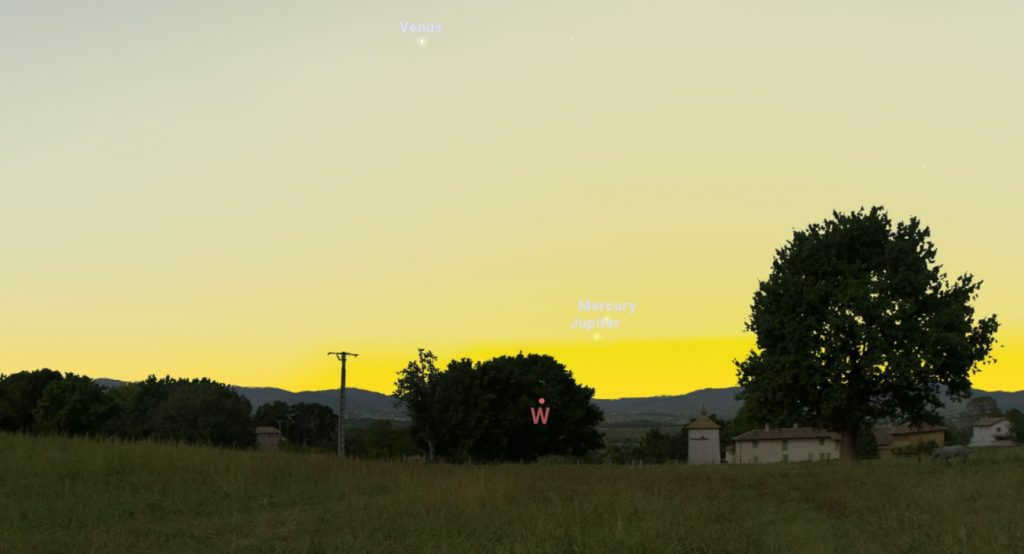
Among the five planets, Venus shines the brightest. It is simple to locate in the night sky by using the constellation of Aries as a guide. The planets will be positioned along an imaginary line that can be traced from Jupiter and Mercury towards the Moon.
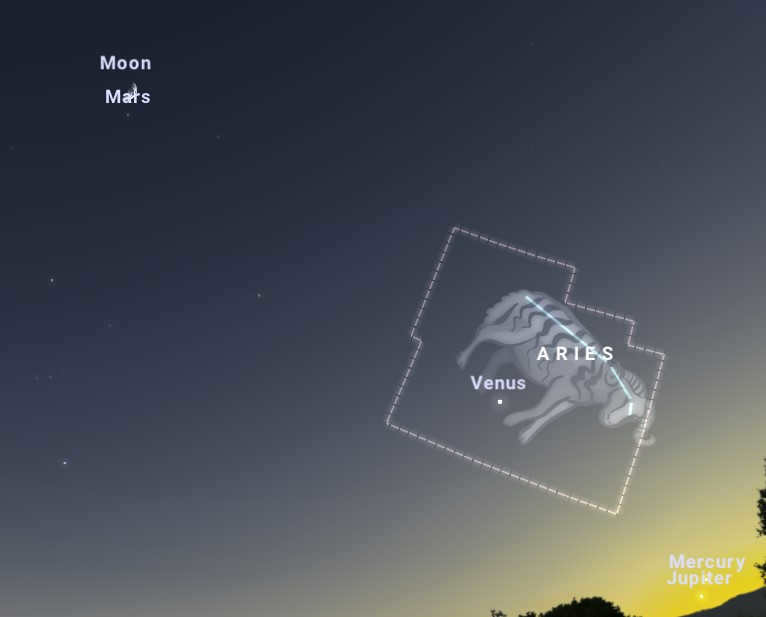
When using binoculars in close proximity to Venus, it is possible to catch a glimpse of the elusive Uranus. The key is to keep an eye out for a faint star with a delicate greenish tint. The optimal time to observe this celestial body is after the sun has fully set and both Jupiter and Mercury have disappeared below the horizon, as this will result in a darker sky with less ambient light.
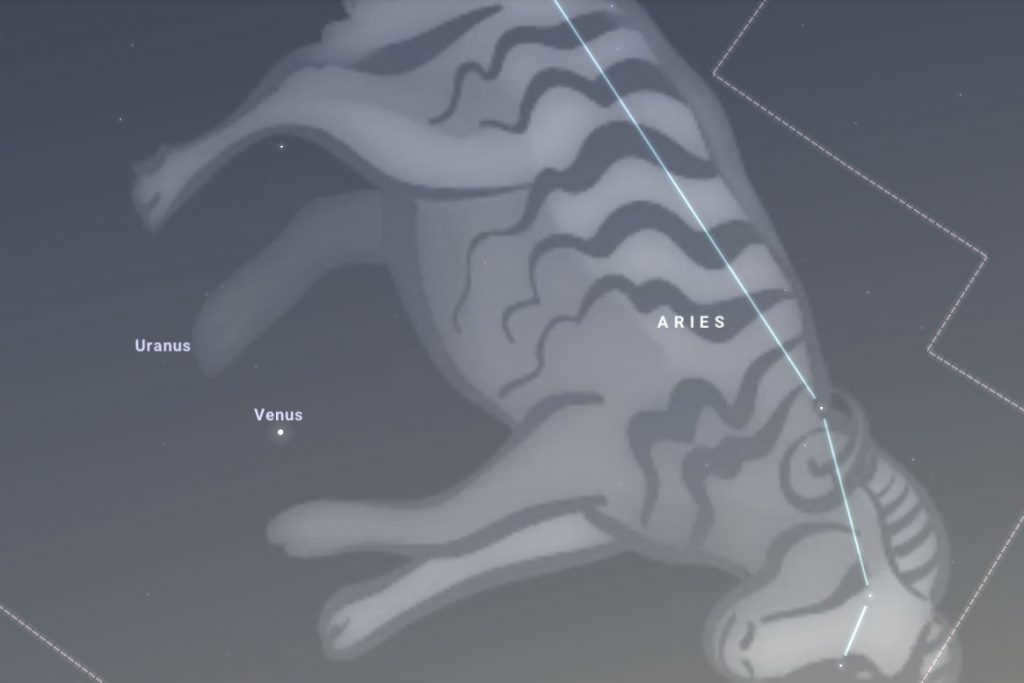
Lastly, Mars is the fifth planet on the list. It will be easy to spot as it will emit a bright red light in the southwestern sky, near the Moon. From March 25 to 27, the planet can be found slightly to the left of Earth’s natural satellite, and then below it.
Ancient astrologers attributed significant meanings to planetary parades and associated them with various natural disasters. Modern science has debunked such ideas, but it is still important to remember that this phenomenon provides an additional opportunity to admire the beauty of the night sky. If the weather hampers observations, there will be another chance this year: the alignment of the dimmer five planets – Mercury, Uranus, Jupiter, Neptune, and Saturn – can be observed in mid-June.
Find out more:
Until 2040, we will not witness such a spectacle again.
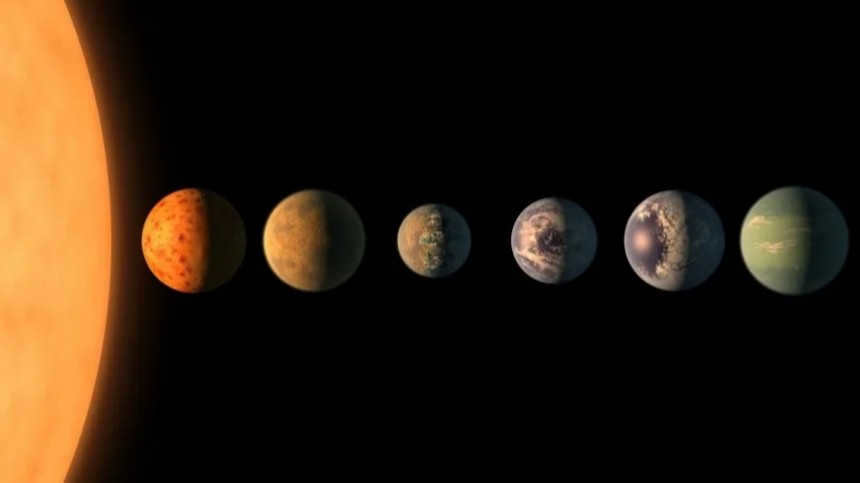
Photo: www.globallookpress.com /NASA
On the night of June 24, people on Earth will have the opportunity to witness a remarkable event – a parade of planets. This extraordinary occurrence involves the alignment of most planets in a single row. Adding to the captivating spectacle will be the crescent Moon, casting its gentle glow upon Mars and Venus.
The Brightest of Them All
According to Faina Rubleva, the scientific director of the Moscow Planetarium, all the planets will be visible except for Mercury. Some of them will even be noticeable in the night sky without the aid of a telescope.
“I believe that around 3 am, we will be able to see Venus, Jupiter, Mars, and Saturn. We should direct our gaze towards the northeast to the south. It will be possible to observe them during the early hours of the morning when the sky is still dark but starting to brighten up,” Rubleva stated on the eve of the “Moscow 24” channel.
What is the best location to observe the event?
According to astronomers, the ideal places to witness the phenomenon in Russia are Moscow and the surrounding region, as well as Nizhny Novgorod, Yekaterinburg, Kazan, Omsk, Krasnoyarsk, and Novosibirsk, starting from 2:30 am. In the southern part of the country, the parade will be visible slightly later, between 3:30 and 4:00 am.
“Venus will be visible in the northeast. Mars will be low in the east, Jupiter in the east, and Saturn in the southeast,” Rubleva specified.
She also mentioned that those interested in seeing Uranus and Neptune will need a telescope to do so.
What will be the impact?
Scientists are in agreement that the positioning of the planets in the night sky will not have an impact on the natural life on Earth. Unlike how the tides are affected by the Moon, for instance. However, there is a belief that such “parades” can create stresses in the Earth’s crust, leading to earthquakes and tsunamis. Nevertheless, this phenomenon is more significant in the field of astrology, where June 24, 2022 is referred to as one of the most karmic days, offering an opportunity for many individuals to change the course of their lives. And these events will occur quite unexpectedly.





